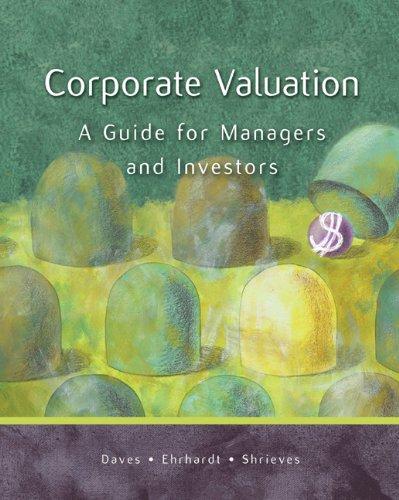Question
ONLY D,E,F (a)Premium (r) = $100 Payout (q)= $500 Healthy state Income I h = $500 Sick state Income I s = $0 Probability of
ONLY D,E,F
(a)Premium (r) = $100 Payout (q)= $500 Healthy state Income Ih = $500 Sick state Income Is = $0 Probability of Illness = 0.10
Fair contract = Premium (r) = prob.(p) x payout (q) Unfair contact = Premium (r) > prob.(p) x payout (q) Unfair contract = $100 > .10 x $500 Unfair contact = $100 > $50 Expected profit = healthy income (Ih) - premium(r) Expected profit= $500 -$100 = $400 Expected profit = Sick income (IS) - premium(r) + payout(q) Expected profit = $0 - $100 + $500 Sick state income = $400 Its an unfair contract. Profit = $400
(b)Premium (r) = $100 Payout (q)= $500 Healthy state Income Ih = $500 Sick state Income IS = $0 Probability of Illness = 0.20
Fair contract = Premium (r) = prob.(p) x payout (q) Unfair contact = Premium (r) > prob.(p) x payout (q) fair contract = $100 = 0.20 x $500 fair contact = $100 = $100 Expected profit = premium(r) - prob.(p) x payout(q) Expected profit= $100 - 0.20 x $500 Expected profit = $0 Its a fair contract. Profit = $0
(c)Premium (r) = $100 Payout (q)= $500 Healthy state Income Ih = $1000 Sick state Income IS = $0 Probability of Illness = 0.20
Fair contract = Premium (r) = prob.(p) x payout (q) Unfair contact = Premium (r) > prob.(p) x payout (q) fair contract = $100 = .20 x $500 fair contact = $100= $100

Step by Step Solution
There are 3 Steps involved in it
Step: 1

Get Instant Access to Expert-Tailored Solutions
See step-by-step solutions with expert insights and AI powered tools for academic success
Step: 2

Step: 3

Ace Your Homework with AI
Get the answers you need in no time with our AI-driven, step-by-step assistance
Get Started


